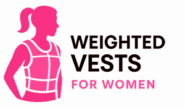In the world of functional fitness and outdoor training, two simple yet powerful tools are gaining serious traction—weighted vests and rucking. Both are effective, accessible ways to boost endurance, strength, and cardiovascular fitness without needing a gym. But when it comes to choosing the right option for your fitness goals, especially as a woman, how do you know which one suits you best?
Let’s explore the pros, cons, and unique benefits of weighted vests vs. rucking, and help you determine which one fits your fitness journey.
What is Rucking?
Rucking is a form of exercise where you walk or hike while carrying a weighted backpack, known as a “ruck.” It originated from military training but has become a popular fitness method thanks to its simplicity and full-body benefits. Rucking combines low-impact cardio with strength conditioning, especially for your back, shoulders, and legs.
What is a Weighted Vest?
A weighted vest is a piece of gear worn like a snug jacket, fitted with pockets that hold small, evenly distributed weights. The vest allows you to add resistance to a variety of exercises—walking, running, squats, pushups, and more—without needing to carry anything in your hands.
Weighted Vests vs. Rucking: The Key Differences
Let’s break down the comparison in key areas:
1. Ease of Use and Comfort
- Rucking: A weighted backpack is familiar and relatively easy to use. Most people already know how to wear a backpack, and adjusting the weight is simple—just add or remove items. However, poorly fitted rucks can cause shoulder strain or poor posture if not worn correctly.
- Weighted Vests: Vests distribute weight more evenly around your torso and keep your hands free, which many women find more comfortable during workouts. High-quality weighted vests are designed to contour to a woman’s body, reducing bounce and friction during movement.
Winner: Weighted vests, especially when it comes to ergonomic design for women.
2. Exercise Versatility
- Rucking is great for long walks, hikes, or as a way to level up your step count. It’s not ideal for dynamic workouts or strength training movements that require flexibility or full-body range of motion.
- Weighted vests shine in versatility. You can wear them for cardio (like walking or jogging), high-intensity interval training (HIIT), bodyweight workouts (like squats, lunges, pushups), and even yoga or dance cardio. They allow you to move freely in any direction without a bulky bag shifting on your back.
Winner: Weighted vests, especially for women looking to mix cardio and strength in one session.
3. Posture and Core Engagement
- Rucking tends to encourage an upright posture due to the weight pulling backward, but it can also strain the lower back or shoulders if overloaded or worn improperly.
- Weighted vests, especially those designed with a women-specific fit, encourage balanced posture and activate the core throughout the workout. The even weight distribution helps reduce injury risk and improves form during squats, planks, and other exercises.
Winner: Tie, depending on how well the gear fits and the kind of movement involved.
4. Accessibility and Cost
- Rucking requires a sturdy backpack and some form of weight (plates, books, sandbags). You can get started with things you already have at home, making it a cost-effective entry point into weighted training.
- Weighted vests come in a range of prices, and quality matters—cheaper vests can be bulky or uncomfortable. Women-specific designs often cost more but offer far better comfort and performance.
Winner: Rucking for affordability, Weighted vests for long-term fitness value.
5. Calorie Burn and Fat Loss
Both methods burn calories effectively because of the added resistance, but their intensity differs:
- Rucking is generally lower intensity and better suited for longer, steady-state cardio. It burns more calories than walking alone but may not reach the high burn of HIIT.
- Weighted vest workouts can be shorter and more intense. A 20-minute HIIT session with a vest can torch calories quickly and build muscle, making it a great tool for fat loss and toning.
Winner: Weighted vests, especially for time-efficient fat-burning workouts.
Which One is Better for Women?
The answer comes down to your fitness goals and lifestyle.
- Choose Rucking if you:
- Love long walks, hikes, or being outdoors
- Want a low-impact way to build endurance
- Prefer simple, meditative movement with steady effort
- Are new to weighted training and want a beginner-friendly start
- Choose a Weighted Vest if you:
- Want to increase workout intensity without adding weights in your hands
- Enjoy variety—HIIT, strength training, running, or even stair climbs
- Are looking to tone muscles and boost cardiovascular fitness at the same time
- Want a fitness tool that works indoors and out, in short bursts or longer workouts
Can You Combine Both?
Absolutely. Many women use rucking as an outdoor cardio tool on recovery days and weighted vests during structured strength or HIIT sessions. You might even ruck while wearing a weighted vest instead of a backpack—but only if the vest is designed for that type of long-duration wear.
Combining both gives you the best of both worlds: endurance + strength, low impact + high intensity.
Final Thoughts
When it comes to weighted vests vs. rucking, there’s no one-size-fits-all answer—but both are incredibly effective, especially for women looking to build strength, burn fat, and move with purpose. The key is finding the gear that suits your body and your goals.
If you’re just starting out and love the outdoors, rucking is a perfect intro to resistance-based cardio. But if you’re looking for an all-in-one tool to level up your home workouts, a high-quality weighted vest designed for women can transform your fitness routine.
Whatever you choose, the most important step is just to get moving—with a little added weight and a lot more confidence.
Explore Our Top-Rated Weighted Vests for Women
Looking for a vest that fits your lifestyle and your body? Check out our curated list of best weighted vests for women—designed for comfort, performance, and real results.

